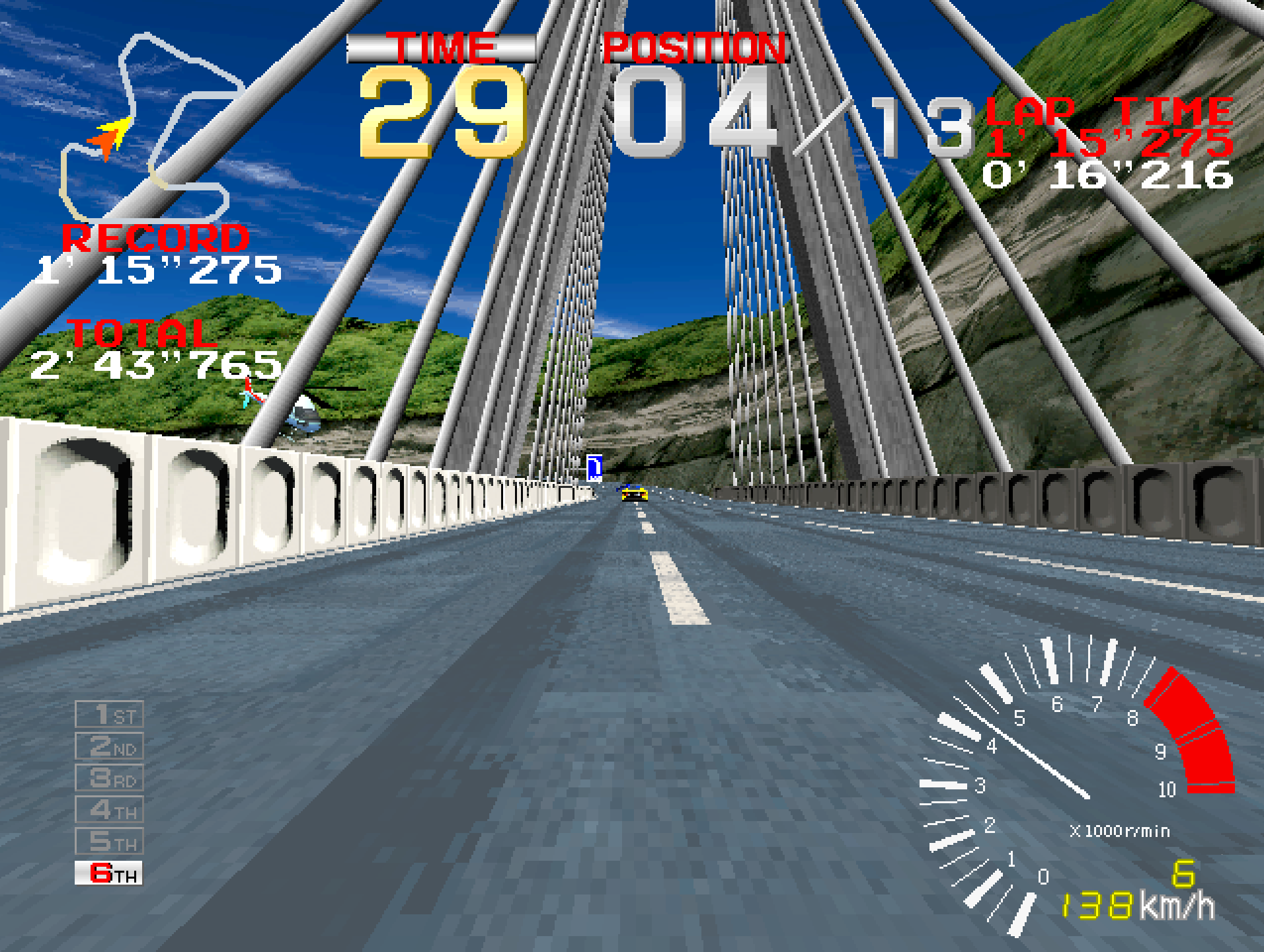Introduction
Released in 1993 by Namco, Ridge Racer revolutionized arcade racing with its fully 3D polygonal graphics, smooth drifting mechanics, and techno-fueled atmosphere. Built on Namco’s powerful System 22 hardware, Ridge Racer set the stage for the modern racing genre with responsive controls, stunning visuals for the time, and a stylish vibe that made it a must-play in ’90s arcades. It was also a key launch title for Sony’s PlayStation, helping bridge arcade and home racing experiences.

Development and History
- Developer: Namco
- Publisher: Namco
- Release Date: 1993 (Japan), 1994 (International)
Ridge Racer was developed using Namco’s advanced System 22 arcade board, which enabled real-time 3D graphics with texture mapping and Gouraud shading—a huge leap over sprite-based racers like Out Run. The game drew inspiration from real-world Japanese car culture and drift racing. It was also one of the first arcade games to allow players to play a round of Galaxian on a built-in screen while the main game loaded.

Gameplay Video
Gameplay and Mechanics
Core Gameplay
- Drift Racing: Master high-speed cornering by skidding through turns without losing momentum.
- Checkpoint Timer: Complete laps before time runs out to extend gameplay.
- Vehicle Selection: Players choose from fictional sports cars with different handling and acceleration.
- Transmission Options: Manual or automatic shifting available.
- Single Track, Multiple Variants: The arcade version featured one core circuit with increasingly challenging layouts.
Features
- Visual Excellence: Crisp 3D graphics, roadside details, and real-time lighting effects.
- In-Game Music: A pulsating techno soundtrack played through cabinet speakers.
- Cabinet Experience: Available in upright, sit-down, and deluxe versions with force-feedback steering.
- Galaxian Minigame: Players could try to beat Galaxian before the race as a warm-up while the game loaded.

Cultural Impact and Legacy
- Genre-Defining: One of the first arcade games to offer a fully 3D racing experience.
- PlayStation Icon: A launch title for the original PlayStation in 1994, helping it gain credibility.
- Long-Running Franchise: Spawned numerous sequels and spin-offs across consoles and arcades.
- Competitive Scene: Encouraged time attack mastery, popular among arcade leaderboard chasers.

Fun Facts
- Ferris Wheel Stage Element: One of the game’s most iconic visual features is the massive rotating ferris wheel.
- No Brake Required (Mostly): Skilled players could complete laps relying entirely on drift control without braking.
- Galaxian Bonus: Clearing the Galaxian game before the race unlocked an extra car.
- System 22 Milestone: Along with Time Crisis, Ridge Racer helped make Namco’s System 22 legendary.

Conclusion
Ridge Racer was more than a technical showcase—it was a revolution in arcade racing. Its smooth drifting, energetic soundtrack, and sharp 3D presentation helped define an era. It remains one of the most influential titles in racing game history and a pillar of Namco’s arcade legacy.

